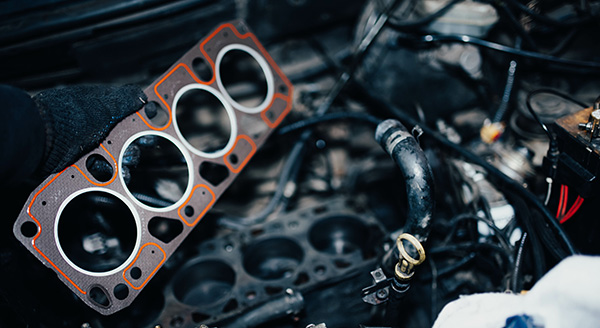
When it comes to vehicle problems, a blown head gasket is one of the most dreaded issues a car owner can face. This is not just because of the complex nature of the repair but also because of the potential high costs involved. But what exactly is a blown head gasket, and can it be fixed? Let's explore this critical aspect of car maintenance, breaking it down in a way that makes it easy to understand.
What Is the Head Gasket
The head gasket is a crucial component in your car's engine, sealing the combustion chambers to ensure that the engine maintains proper pressure. It sits between the engine block and the cylinder head, preventing oil, coolant, and combustion gasses from mixing. A well-functioning head gasket is vital for maintaining the integrity and efficiency of your engine.
A blown head gasket occurs when this seal is damaged or compromised, most often due to overheating. This can lead to a variety of issues, such as loss of engine power, oil and coolant leaks, and even catastrophic engine failure if left unchecked. The symptoms of a blown head gasket can be subtle at first but tend to worsen quickly, necessitating prompt attention.
Signs of a Blown Head Gasket
Recognizing the signs of a blown head gasket early can save you a lot of trouble. Here are some common indicators:
Overheating Engine
If your engine overheats frequently, it could be due to a blown head gasket. The failure of the gasket can allow coolant to leak into the combustion chambers or mix with the oil, both of which can lead to overheating.
White Smoke from the Exhaust
One of the most telltale signs of a blown head gasket is white smoke billowing from the exhaust pipe. This happens because the coolant leaks into the combustion chamber and burns off as steam.
Milky Oil
Check your engine oil. If it looks milky or frothy, this indicates that coolant is mixing with the oil, a sure sign of a blown head gasket.
Loss of Coolant with No Visible Leak
If your car is losing coolant without any obvious leaks, it might be leaking internally through a blown head gasket.
Can You Fix a Blown Head Gasket?
The short answer is yes, a blown head gasket can be fixed, but it's not a simple task. The complexity of the repair depends on the severity of the damage and the type of engine your vehicle has. Here's a closer look at the process:
Diagnosis
Proper diagnosis is essential before any repairs can be made. This involves checking for the presence of exhaust gasses in the coolant, inspecting the oil condition, and sometimes performing a compression test to identify the affected cylinders.
Preparation
Repairing a blown head gasket requires significant preparation. The engine must be cooled, and the cylinder head must be removed. This involves disconnecting various components like the intake manifold, exhaust manifold, and other ancillary parts.
Repair or Replacement
Once the cylinder head is removed, the old gasket is taken out, and the surfaces are cleaned thoroughly. The cylinder head and engine block are inspected for warping or cracks. If any damage is found, those parts may need to be machined or replaced. The new gasket is then installed, and the engine is reassembled.
Testing
After the repair, the engine is thoroughly tested to ensure the problem is resolved. This includes checking for leaks, ensuring proper compression, and verifying that the engine runs smoothly without overheating.
DIY vs. Professional Repair
While some people might attempt a head gasket repair themselves, it is generally recommended to have a professional handle it. The procedure is labor-intensive and requires precise knowledge and tools. A minor mistake during the repair can lead to significant engine damage, costing you much more in the long run.
Professional technicians have the expertise to diagnose and fix the problem correctly, ensuring your vehicle is back to its optimal performance. Although the repair costs can be high, avoiding more severe engine damage is a worthwhile investment.
Preventing Head Gasket Failure
Preventing a head gasket failure is always better than fixing one. Regular maintenance is key. Here are some tips to help prevent this issue:
- Regular Coolant Changes: Keeping your cooling system in top shape is crucial. Regularly check and change your coolant as recommended by your vehicle's manufacturer.
- Monitor Engine Temperature: Keep an eye on your engine's temperature gauge. If it starts to overheat, stop driving immediately and address the issue.
- Regular Oil Changes: Maintaining clean oil can help prevent overheating and ensure all engine components are well-lubricated and functioning properly.
- Inspect Hoses and Belts: Regularly inspect the condition of hoses and belts. Replacing worn-out parts can prevent cooling system failures that lead to overheating.
Is your engine showing signs of trouble? Let the experts at Circle M Tire & Automotive handle it. We offer top-notch services to keep your engine in perfect condition. Call us today to learn more and book an appointment!